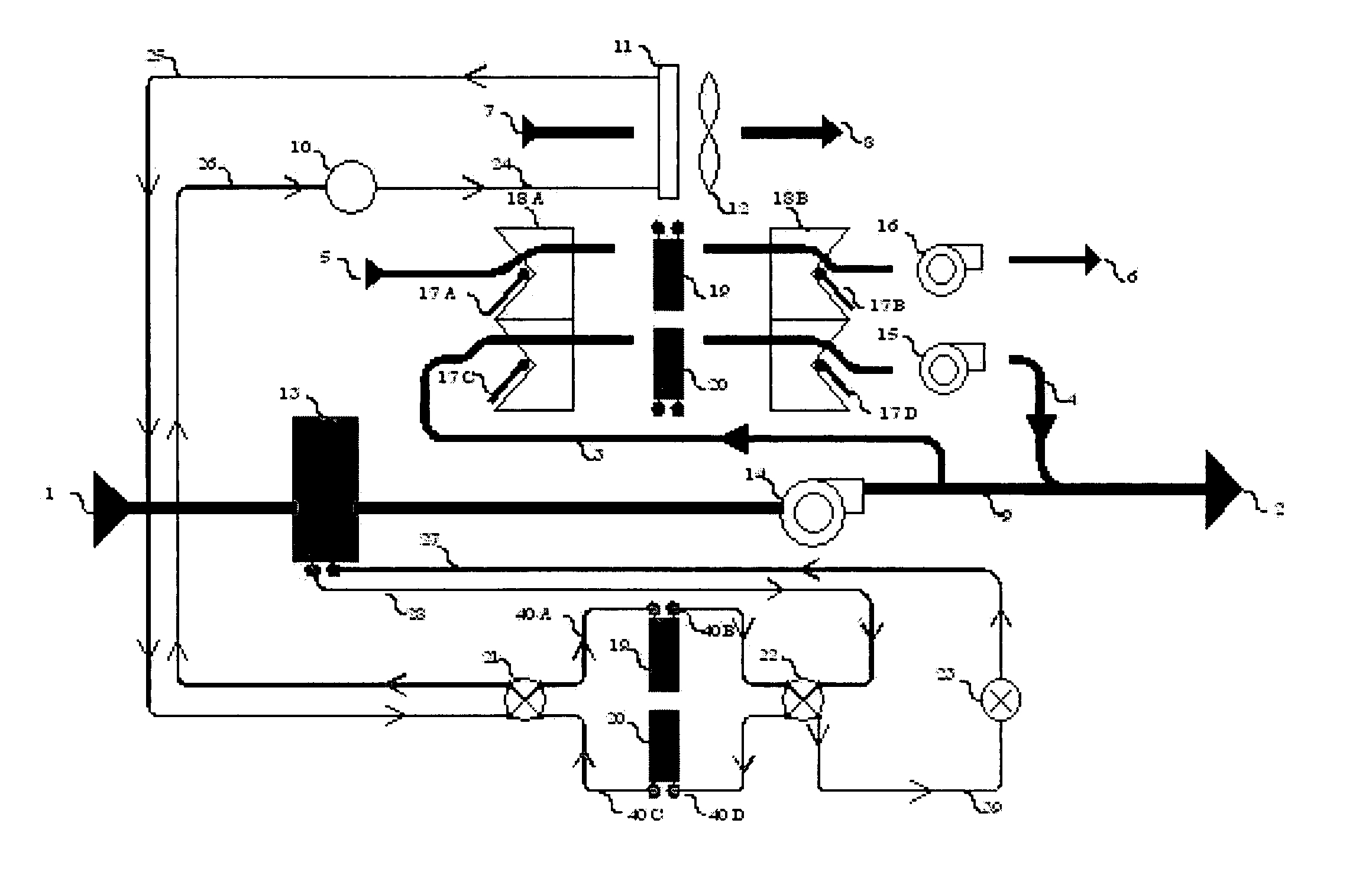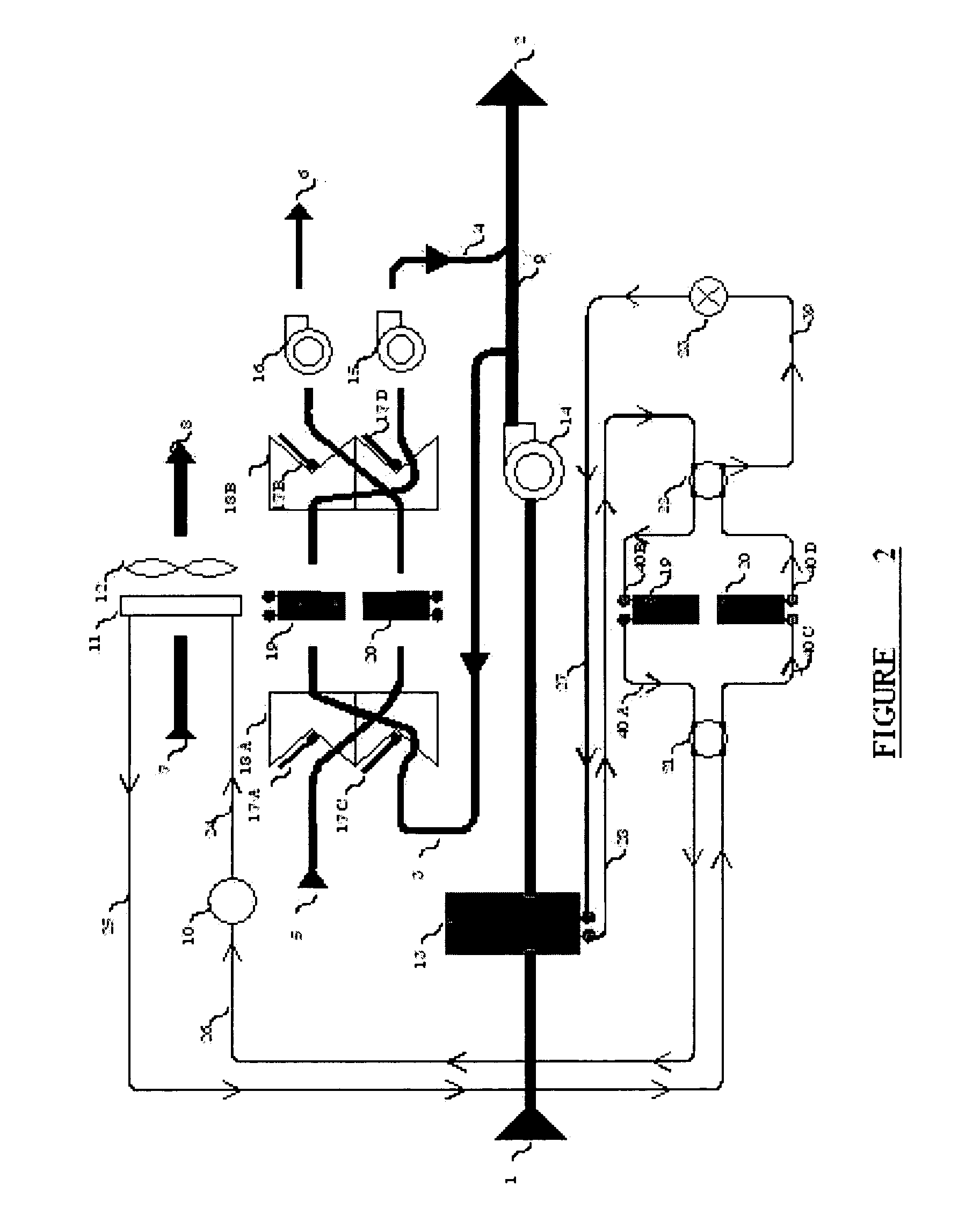Desiccant-assisted air conditioning system and process
a technology of desiccant and air conditioning system, applied in the field of desiccant-assisted air conditioning system and process, can solve the problems of airborne contaminants, insufficient delivery of air conditions, ineffective humidity control of most conventional air conditioning process and system, etc., and achieve the effect of facilitating the desiccant sorption and desorption process
- Summary
- Abstract
- Description
- Claims
- Application Information
AI Technical Summary
Benefits of technology
Problems solved by technology
Method used
Image
Examples
Embodiment Construction
[0036]As used herein, the term “air conditioning” is a general term and includes dehumidified air, humidified air, and cool or warm air, or a combination thereof. The term “process air” means any air that is to be processed by the present system. The term “regeneration air” means any air that is used to regenerate the desiccant material. The term “supply air” means the air that is supplied to a spaced to be provided with conditioned air. The term “return air” means the air either returning from the conditioned space or newly introduced air. The term “refrigerant” means a substance used as an agent for cooling or heating, and includes such substances in a liquid, gas, or vapor form. The term “desiccant” means a drying substance or agent and may include materials such as silicas, aluminas, titanium, lithium chloride, zeolites, polymers and clay. The term “compressor” means a machine for reducing the volume and increasing the pressure of gases in order to condense and expand the gases....
PUM
 Login to View More
Login to View More Abstract
Description
Claims
Application Information
 Login to View More
Login to View More - R&D
- Intellectual Property
- Life Sciences
- Materials
- Tech Scout
- Unparalleled Data Quality
- Higher Quality Content
- 60% Fewer Hallucinations
Browse by: Latest US Patents, China's latest patents, Technical Efficacy Thesaurus, Application Domain, Technology Topic, Popular Technical Reports.
© 2025 PatSnap. All rights reserved.Legal|Privacy policy|Modern Slavery Act Transparency Statement|Sitemap|About US| Contact US: help@patsnap.com



